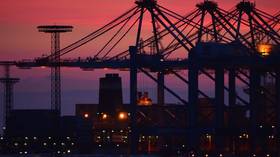The cryptocurrency, which later dropped back to trade below $28,000, is set for its biggest monthly gain since May 2019.
Analysts say that institutional investors, such as Paul Tudor Jones and Stanley Druckenmiller, have been driving bitcoin’s record run. Big investors added $11.5 billion in bitcoins over the previous three months.
“While a growing institutional presence has been part of the narrative of the current bull run, we may see increased retail interest in bitcoin as a form of digital gold,” Paolo Ardoino, chief technology officer of crypto exchange Bitfinex, told Bloomberg.
Also on rt.com Bitcoin should be worth $400,000 based on its scarcity – Guggenheim CIO
Meanwhile, regulatory concerns remain a wider factor for crypto investors. The Securities and Exchange Commission this month accused Ripple Labs and its top executives of misleading investors in affiliated token XRP. While Ripple plans to challenge the accusation in the courts, the development underscores the prospect of stricter oversight of digital assets.
XRP has plummeted over 70 percent this month and faces further pressure, with Coinbase becoming the latest exchange to announce suspension of trading in the token.
For more stories on economy finance visit RT’s business section
Article source: https://www.rt.com/business/511084-bitcoin-record-price-high/?utm_source=rss&utm_medium=rss&utm_campaign=RSS
